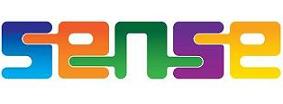Top Qs
Timeline
Chat
Perspective
Sense (programming)
From Wikipedia, the free encyclopedia
Remove ads
Sense is an educational programming environment created by The Open University (OU) in the United Kingdom.[3][4] It uses a drag-and-drop programming environment designed to teach students the fundamentals of computer programming, using different shape and colour "blocks" selected from a palette of available commands, meaning that the student needs no prior experience of programming nor need to learn a syntax. It is based on the Scratch programming language developed by the MIT Media Lab,[5] and uses .sb files[6] like Scratch but the two pieces of software cannot use each other's files.[7]
The Sense programming environment is designed to work in conjunction with the SenseBoard, a specialised piece of hardware which connects to a user's computer via a USB connection.[8][9] The SenseBoard has different input types such as sensors for infrared, light, sound (microphone), and temperature (thermometer), and outputs such as a motor and light emitting diodes (LEDs).[10]
Sense and the SenseBoard are primarily used as part of the OU's My Digital Life (TU100) module,[11] but is also used to a lesser degree on other modules. Sense was trialed in London schools in late 2012.
Remove ads
References
External links
Wikiwand - on
Seamless Wikipedia browsing. On steroids.
Remove ads

